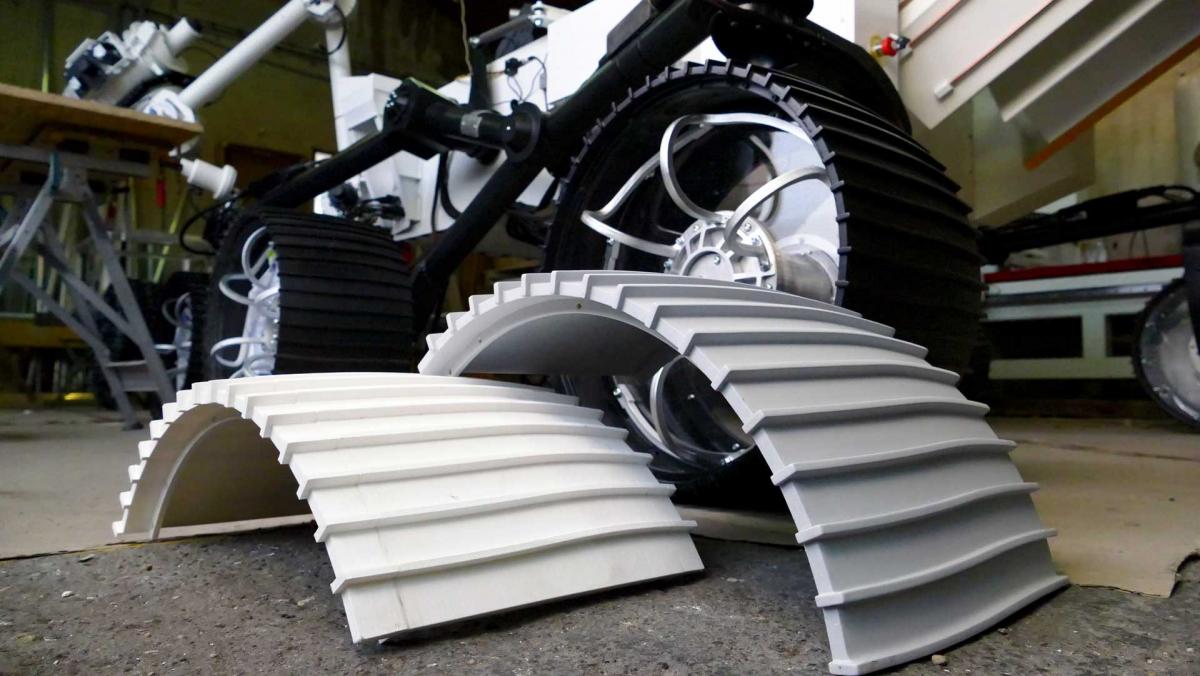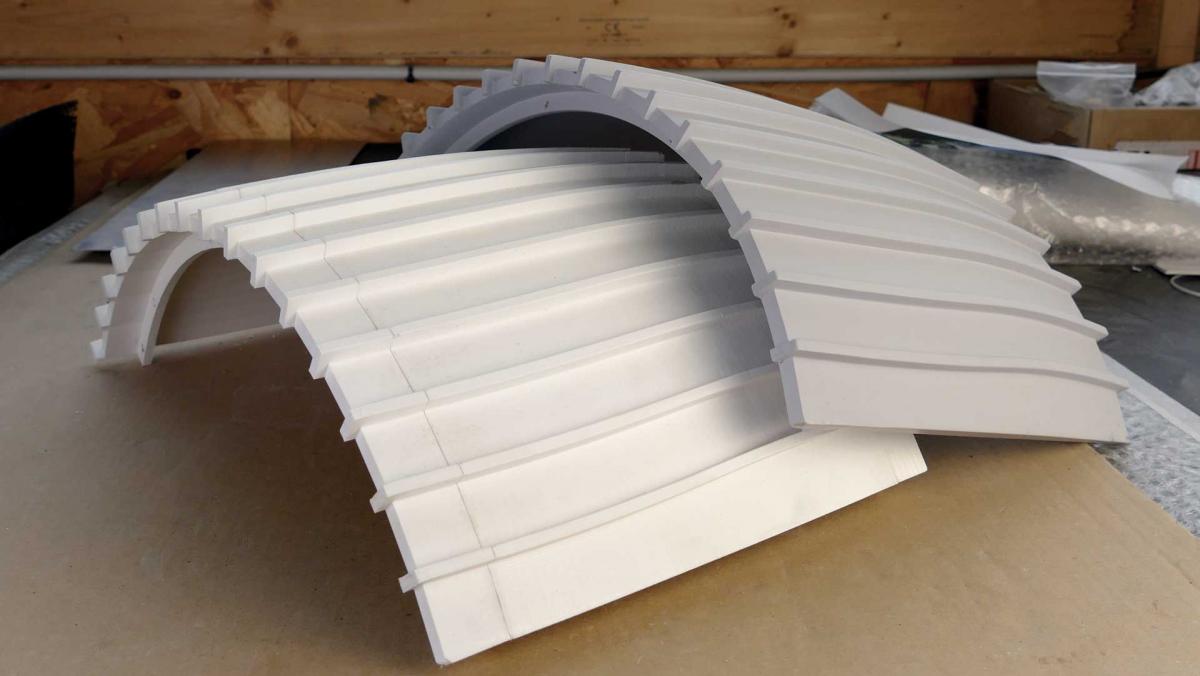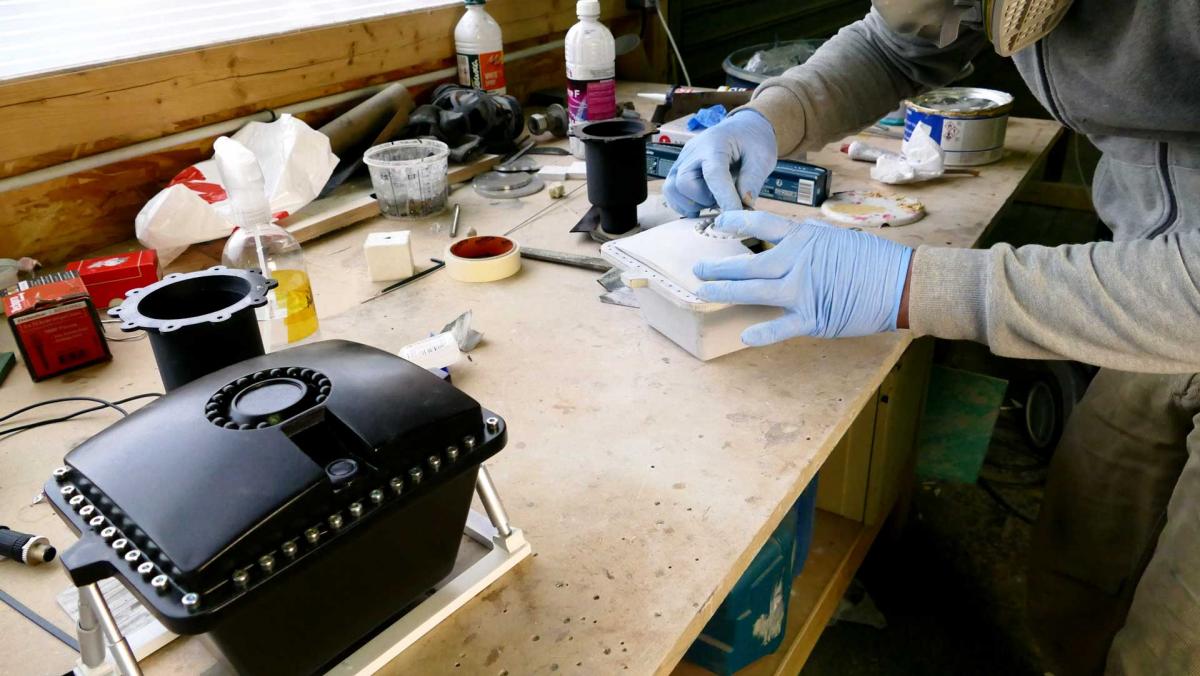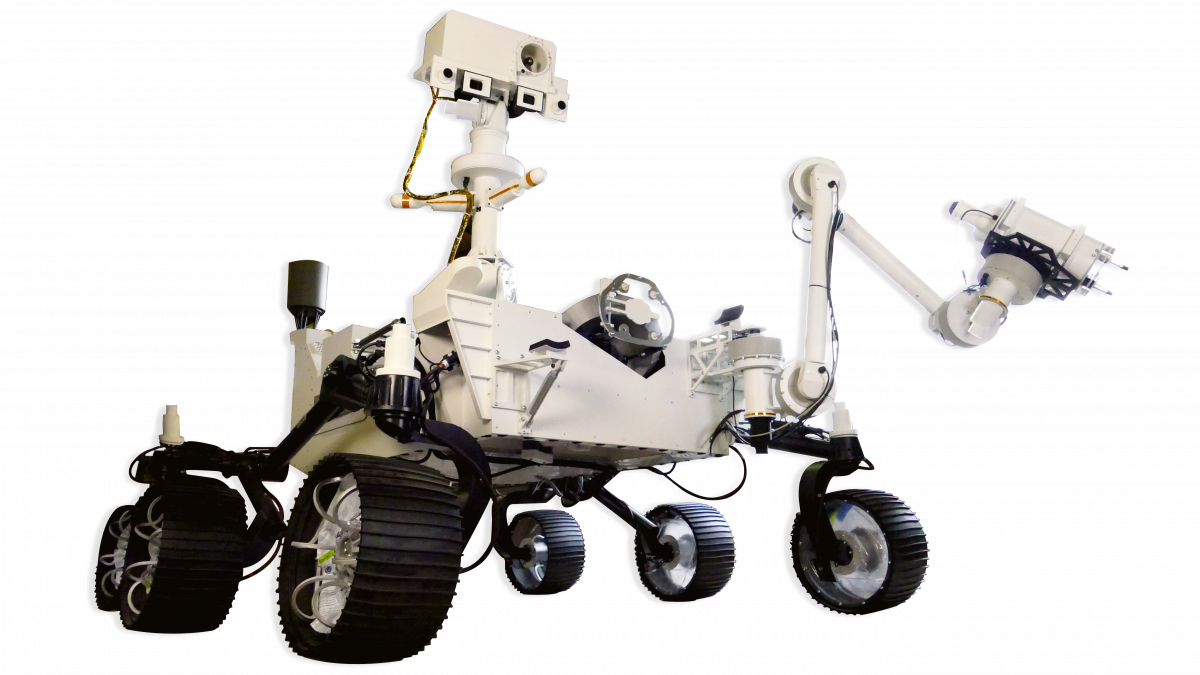Use case of theto make the Perseverance rover replica:
Jonathan McINTOSH has been working for more than 27 years in the manufacture of sets and museographic fittings.
In its own structure, l'Atelier de l'insolite, he designs and produces, among other things, the space rover replicas presented at the Cité de l'Espace in Toulouse, and uses the Strateo3D DUAL600 for various processes in its manufacturing.
- WHAT WAS YOUR FIRST NEED?
On the Perseverance rover project, we needed to make various finished parts and production tools, as you can see in the above video. But our first need was the creation of a wheel tread specimen to check the technical solution, and to create a master copy for moulding. The tread was printed in 3 sections which are then screwed on a rolled aluminium sheet. The test parts were used to validate this assembly before the final elastomere parts were made.

- HOW DID YOU MODEL THIS TOOL (FIRMWARE)?
The modeling was made on Sketchup Pro, which is not the more adapted firmware for this kind of task, but I had this model which I had developped on a previous project.
- WHAT MATERIAL WAS USED TO PRINT THE TOOL, AND FOR WHICH REASON?
For this model, I have used PLA because I had no mechanical constraints, and I needed a real good dimensional stability. PLA was really adapted because the warping (shrinkage phenomenon) is minimal.
- HOW DID YOU DETERMINE THE VARIOUS MANUFACTURING SETTINGS (LAYER THICKNESS, POSITIONNING, FILL RATE, ETC…)?
I have been using 3D printers of this type (FDM, editor's note) for a long time, and so, my experience allowed me to define the printing settings, depending on the Strateo3D DUAL600's performances.
- DID THE PART HAVE TO BE PRINTED IN SEVERAL PARTS? IF SO, HOW MANY? WAS IT PRINTED ALL AT ONCE ON THE SAME BED OR SEVERAL PRINTS?
The part is therefore 1/3 of the tread, printed in 3 parts on the bed to avoid the use of supports. The 3 parts were then glued together to obtain this one third tread section.

- HOW MUCH TIME DID THE PRINT LAST?
It took about 15 hours to print each section.
- WHAT BENEFITS DID YOU SEE IN USING THE STRATEO3D DUAL600 TO PRINT THIS PART?
The printing volume of the Strateo3D DUAL600 allows the production of these large parts which would be very expensive to produce using another process. The simplicity of manufacturing these parts and their low cost allows the process to be repeated untill the desired geometry is acheived, respecting all the parameters that must be taken into acount.
- COULD YOU COMPARE IT WITH ANOTHER MANUFACTURING METHOD (TIME, COST, ETC…)?
It's hard to say, but traditionally, I have already made similar wheels, the manufacturing time was about 60 hours per wheel, with a less accurate result. Thanks to this process, the printing time is about 45 hours and, as it is an automatic machine, I can spend my time on other things while the printing is operating, The cost difference is therefore considerable.

- Are you considering other uses of the machine/request to the printing service?
This machine is part of the equipments of my workshop that are used pemanently. I use it to print parts of any size, assembly jigs and other tools. The printing volume is its greater asset. At first, I bought the Strateo3D DUAL600 to print hubs for rover wheels of a different type. This was quite impossible with another process. The dual extrusion also allows parts to be printed with soluble supports, which was essentiel for this achievement. It is quite tricky to set up, but once it works, it is fantastic!
Jonathan McINTOSH, l'Atelier de l'Insolite

